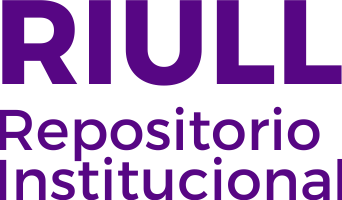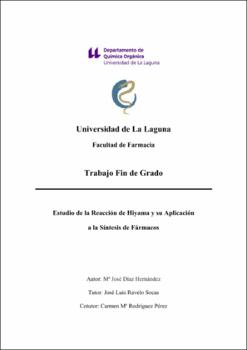Estudio de la reacción de Hiyama y su aplicación a la síntesis de fármacos
Author
Díaz Hernández, María JoséDate
2023Abstract
It´s hard not to overstate the impact that transition metal catalyzed carbon-carbon cross coupling reactions have had on the field of organic synthesis, not only in research laboratories but also in the chemical and pharmaceutical industry. This novel methodology is capable of preparing synthetic compounds as good as natural ones, with identical structures and in very mild conditions, which has even allowed the development of news structures that have greater activity, which has even allowed the development of new structures that have greater activity tan natural ones, allowing a double track. The present work focuses on the reaction of Hiyama, which consists of cross coupling reaction of organosilanes with organic alkil or aryl halides. This type of reaction arose as an alternative to others that implied a high toxicity due to the transition metal used, as well as the reaction conditions used. Instead, this new reaction involved the use of a metal with very low toxicity and softer reaction conditions with very high yields, aspects unthinkable with the classic methodologies og Organic Chemistry. The development of this new methodology has allowed the preparation of thousands of organic compounds of diverse structures, useful in very varied areas such as health, food, agricultura, technology, new materials, etc. In this work wehave focused mainly on drugs such as antibiotics, antihyperglycemic and antiproliferative, among otthers. Es difícil no exagerar el impacto que han tenido las reacciones de acoplamiento cruzadas carbono-carbono catalizadas por metales de transición en el campo de la síntesis orgánica, no sólo en los laboratorios de investigación sino también en la industria química y farmacéutica. Esta novedosa metodología es capaz de preparar compuestos sintéticos tan buenos como los naturales, con estructuras idénticas y en condiciones muy suaves, lo que ha permitido incluso desarrollar nuevas estructuras que presentan mayor actividad que las naturales, permitiendo una doble vía. El presente trabajo, se centra en la reacción de Hiyama, la cual consiste en una reacción de acoplamiento cruzado de organosilanos con haluros orgánicos de alquilo o arilo. Este tipo de reacción surgió como alternativa a otras que implicaban una alta toxicidad por el metal de transición utilizado, así como las condiciones de reacción empleadas. En cambio esta nueva reacción implicaba el uso de un metal con muy baja toxicidad y condiciones de reacción más suaves con altísimos rendimientos, aspectos impensables con las metodologías clásicas de Química Orgánica. El desarrollo de esta nueva metodología ha permitido la preparación de miles de compuestos orgánicos de estructuras diversas, útiles en áreas muy variadas como la salud, alimentación, agricultura, tecnología, nuevos materiales, etc. En este trabajo nos hemos centrado fundamentalmente en fármacos como antibióticos, antihiperglucémicos y antiproliferativos, entre otros.





